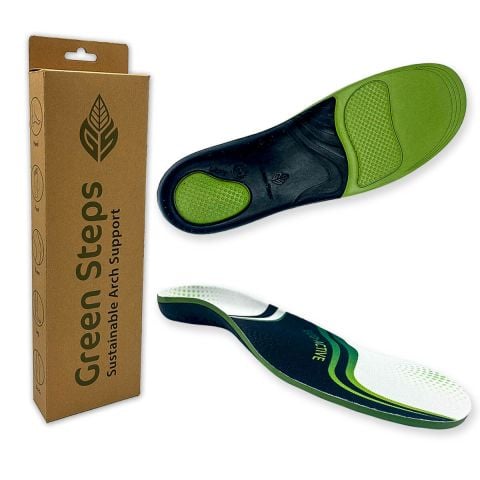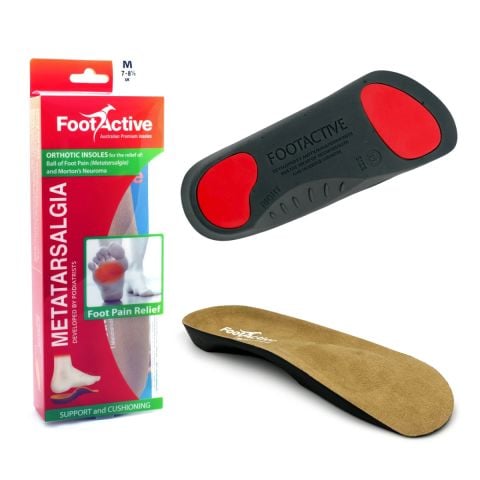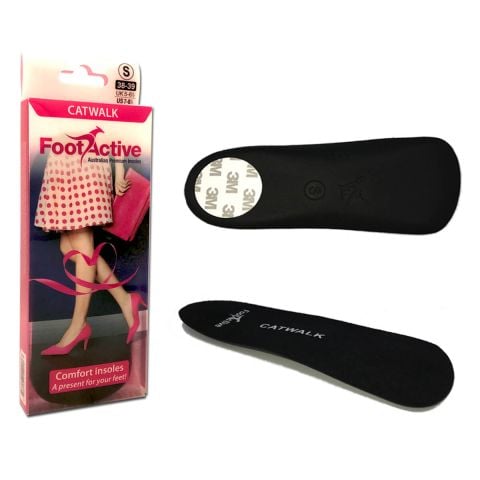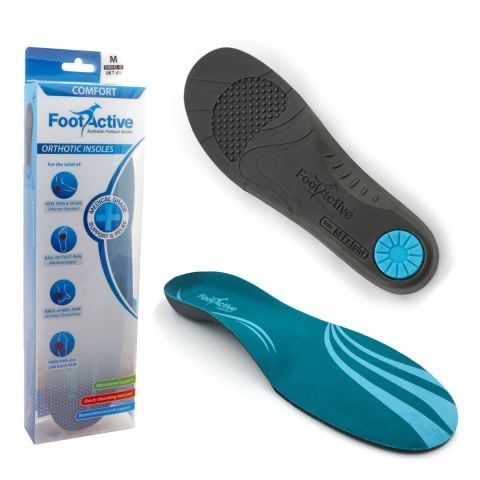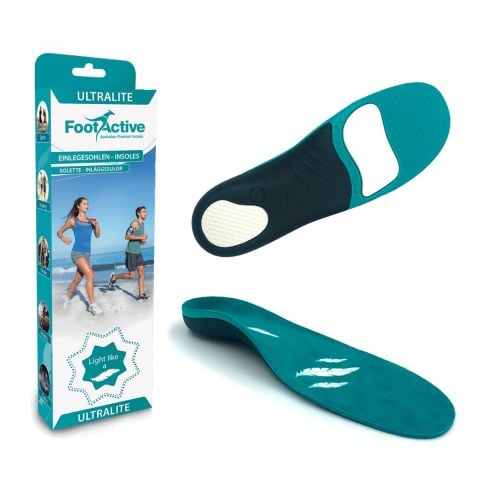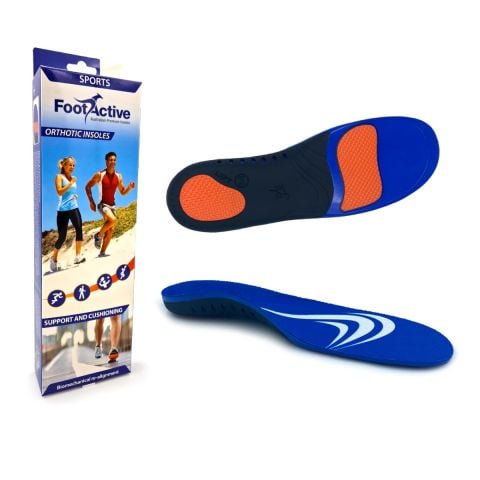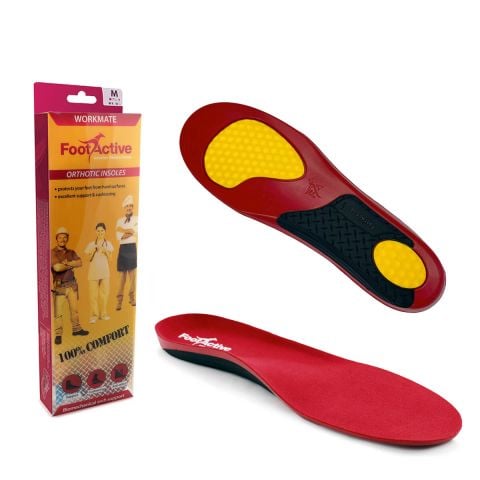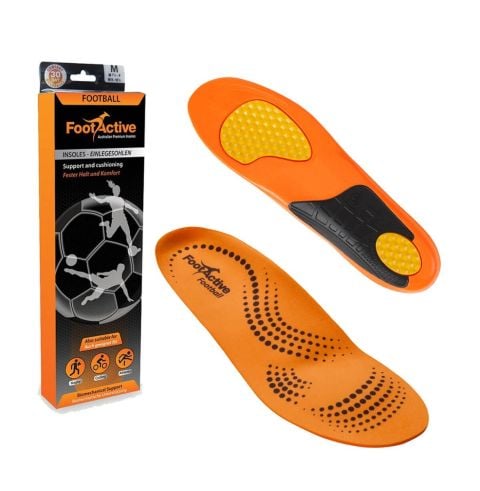Symptoms of Metatarsalgia
Pain in the ball of your foot can manifest in several ways; you might be experiencing inflammation and swelling after exercise, sharp pain under the ball of your foot, continuous aching or other symptoms. In many cases, the use of ice and resting as well as adding orthotic insoles for metatarsaliga to your shoes can be enough to provide Ball of foot pain relief that works. However, for those that have this severe pain in the ball of your foot, it may be a sign of a different issue, and you should consult your GP.
The most common type of ball of foot pain is metatarsalgia. This is an overuse condition, most often found in athletes or those who engage in high-impact sports (running and jumping).
What Causes Ball Of Foot/Metatarsal Pain?
The small nerves in the foot can rub together and cause inflammation around the metatarsal bones in the ball of the foot. This is usually caused by intense training and strenuous activity with an increased impact on the area. Alternatively, small breaks in the metatarsal bones or anywhere in the forefoot can cause stress fractures and pain in the ball of the foot as the structure of your foot is affected.
Morton’s Neuroma causes pain in the ball of your foot and can feel like a small stone in your shoe, a sharp pain, pins and needles in the toe box or numbness. This is where the tissue around the nerve thickens.
Those who are overweight are naturally more likely to experience foot concerns, including metatarsal pain. This is because there is more weight and therefore a greater impact from walking and other activities.
To prevent foot pain, you should consider losing weight if it is healthy to do so. This will relieve the pressure on your foot in these specific locations. In addition to this, the use of specialist insoles for Ball of foot pain relief in the short term can help you to improve your day-to-day whilst you work on these long-term solutions. Though these insoles may not provide complete metatarsalgia relief, they will ensure that you can walk around freely with minimal pain.
How To Treat Metatarssal Pain
If left untreated, metatarsalgia or ball of foot pain can worsen the condition and cause pain in other areas of the foot, lower legs, back and the other foot. This occurs because you will naturally rely on your other foot and other muscles to compensate for light stepping with your injured foot. Therefore, reducing the impact of this foot pain as soon as possible is advised to prevent any other injuries from occurring. Whether this is working to find the Best shoe insoles for metatarsalgia that work within your work boots or setting goals such as losing weight as a long-term solution to this pain, the early treatment of this condition is recommended.
As with most strain or sprain injuries, treatment for pain in the ball of the foot is largely preventative:
Shoe Inserts
Properly designed and supportive orthotic inserts will curve upwards to cushion the ball of the foot (toe box) and have arch support, as most people who complain of ball of foot pain also have a high instep. The orthotics are designed with shock absorbers to minimise the impact on the ball of the foot with every step. FootActive Arch Supports for Metatarsalgia are designed to re-align the foot over time without causing injury to other areas of the foot or body thus providing effective Metatarsalgia relief without being invasive.
Shoes With A Wide Toe-Box
Open-toed shoes, squarer-toes shoes and wide fitting shoes can all reduce the strain to the ball of the foot, essentially reducing the Pain in the ball of your foot. Many athletes tighten their trainers too much as they are looking for support to the underside of the foot and mistake the sensation. Unfortunately, this can make the condition worse. Therefore, investing in some of the best shoe insoles for metatarsalgia will help to prevent the presence of pain from the foot, allowing you to train effectively.
Those who wear high heels are also more likely to experience metatarsal pain. This is because the foot is angled downwards, and the ball of the foot will take the brunt of the shock and impact of movement. Therefore, the addition of supportive insoles within the shoes can provide ball of foot pain relief whilst preventing any other impact to your back, calves or other foot.
Pain Relief
If you are looking for effective Metatarsalgia relief, there are several ways that you can go about achieving this. Over the counter pain, relief and anti-inflammatories are recommended for acute flare-ups and pain after long days on your feet or high-impact activity. In addition to this, you can also use ice and resting to provide short term Metatarsalgia relief. If the pain persists and you are regularly turning to medication, you should consult a doctor or podiatrist.
Metatarsal Relief & When To Speak To A Doctor
If ball of foot pain persists after you have completed the at-home treatments and preventative methods, you should consult your GP. They will know how to relieve metatarsalgia effectively and may take medical action if the pain is so severe it is preventing you from your daily activities. It might be the case that you have a pinched nerve that is causing acute pain in the ball of your foot or undiagnosed arthritis.
Consult your doctor or podiatrist if you are experiencing ball of foot pain if you have diabetes as they will provide you with specialist Metatarsalgia treatment that works alongside your existing conditions.
Metatarsal Pain FAQs
What is the ball of your foot?
The ball of your foot is the soft, padded area in between your toes and the rise of your arch. When flexing your toes, you’ll be able to see the ‘ball’ shape which gives this part of your body its name.
Is ball of foot pain the same as metatarsalgia?
Yes, metatarsalgia is the same thing as ball of foot pain and both terms can be used interchangeably. Therefore, finding the Best shoe insoles for metatarsalgia can also help you with general wear and tear.
What does metatarsalgia feel like?
Metatarsalgia can manifest in several ways. Your symptoms can help indicate what may be causing your pain. By keeping an eye on these symptoms, you can then begin to determine How to relieve metatarsalgia in the best way that works for you. Whether this be the use of over-the-counter medication, there are several ways that you can find ball of foot pain relief that works for you.
Ball of foot pain can be sharp and feel like it is shooting down to your toes. In some instances, it may feel like a dull, aching pain, or as though a stone is in your shoe.
You may also be experiencing symptoms such as redness, swelling and bruising. You might also have noticed a hard bony lump near your big toe.
The best shoe insoles for metatarsalgia can help to relieve this pain.
What causes ball of foot pain/metatarsalgia?
Ball of foot pain may be caused by a sprain, Morton’s neuroma, bursitis, arthritis, or bunions.
How do you relieve pain in the ball of your foot?
As with most injuries, it always helps to rest your foot, ice it to reduce swelling and try some gentle stretches as solutions of how to relieve metatarsalgia.
It’s also important to take long-term preventative measures. Our metatarsalgia insoles can help provide support and cushioning, increasing your comfort and reducing pressure as you walk. These can be ordered from us here at FootActive and slot straight into your shoes to provide an effective solution that works with your existing shoes and limits the pain you are in. With several different options for insoles for either high heeled shoes, work boots and even children’s shoes, there are several solutions you can benefit from when it comes to Ball of foot pain relief
Another solution may be to try replacing high heels and tight shoes with comfortable shoes, so that your feet have a little more breathing room.
How long does it take to relieve metatarsalgia?
Ultimately, it depends on the cause of metatarsalgia, and whether the proper measures are taken for sustainable healing. Generally, it can take 6-8 weeks to heal.
What is the fastest way to cure metatarsalgia?
There are several methods you could use as a quick treatment for metatarsalgia, including the RICE method (Rest, Ice, Compression, Elevation), and over the counter medication. Using insoles and arch supports for metatarsalgia can provide instant relief from ball of foot pain, and make daily activities more comfortable.
Do you need to see a doctor to treat metatarsalgia?
You can treat ball of foot pain simply from home by using gentle stretches and providing your feet with support for metatarsalgia by using the best insoles for ball of foot pain. However, if your pain worsens or persists, you should see your GP.
Always see your GP if your pain prevents you from carrying out normal activities, or if you are a diabetic.

